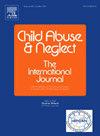社交媒体动机在屏幕使用与网络受害关系中的调节作用。
IF 3.4
2区 心理学
Q1 FAMILY STUDIES
引用次数: 0
摘要
背景:青少年的屏幕时间越来越长,因此,网络欺凌的受害者变得越来越普遍。虽然先前的研究已经建立了屏幕使用与网络欺凌受害之间的正相关关系,但很少有研究探讨屏幕使用动机与网络欺凌受害之间的关系,并调节屏幕使用与网络欺凌受害之间的正相关关系。目的:本研究试图通过探索屏幕使用动机与网络欺凌受害之间的关系,以及这些动机是否调节屏幕时间与网络欺凌之间的关系来解决这些研究空白。参与者和环境:数据来自332名参与者(平均年龄= 16.27岁;25%的男性)在纵向研究中收集。参与者要求年龄在12-18岁之间,精通英语,目前没有接受心理问题治疗,拥有智能手机。方法:参与者安装了一个移动传感应用程序,以客观地测量他们在四周内的屏幕使用情况。使用青少年互联网动机问卷对屏幕使用动机进行了评估。在后续评估中,网络欺凌经历是自我报告的。结果:应对(p)结论:这些发现表明,使用屏幕的冒险动机与遭受网络欺凌的可能性增加有关,并且它们调节了屏幕时间与网络欺凌的关联。本文章由计算机程序翻译,如有差异,请以英文原文为准。
The moderating role of social media motives in the relationship between screen usage and cybervictimization
Background
Screen time is on the rise among youth, and as a result, cyberbullying victimization has become increasingly prevalent. While prior research has established a positive correlation between screen usage and cyberbullying victimization, a paucity of research has explored how motives for screen usage are associated with cyberbullying victimization and moderate the positive association between screen usage and cyberbullying victimization.
Objective
The present study sought to address these research gaps by exploring the association between motives for screen usage and cyberbullying victimization and examining whether these motives moderate the association between screen time and cyberbullying.
Participants and setting
Data from 332 participants (mean age = 16.27 years; 25 % male) were collected in a longitudinal study. Participants were required to be aged 12–18, proficient in English, not currently in treatment for psychological issues, and own a smartphone.
Methods
Participants installed a mobile sensing app to measure their screen usage over a four-week period objectively. Motives for screen usage were assessed using an adapted version of the Internet Motive Questionnaire for Adolescents. Cyberbullying experiences were self-reported during a follow-up assessment.
Results
Coping (p < 0.01), conformity (p < 0.001), and enhancement motives (p < 0.05) were positively associated with cyberbullying victimization. Conformity motives moderated the relationship between screen time and victimization, with the association being strongest among youth with low conformity motives (p < 0.01).
Conclusions
These findings indicate that risky motives for screen usage are associated with a higher likelihood of experiencing cyberbullying victimization and that they moderate the association of screen time with cyberbullying.
求助全文
通过发布文献求助,成功后即可免费获取论文全文。
去求助
来源期刊

Child Abuse & Neglect
Multiple-
CiteScore
7.40
自引率
10.40%
发文量
397
期刊介绍:
Official Publication of the International Society for Prevention of Child Abuse and Neglect. Child Abuse & Neglect The International Journal, provides an international, multidisciplinary forum on all aspects of child abuse and neglect, with special emphasis on prevention and treatment; the scope extends further to all those aspects of life which either favor or hinder child development. While contributions will primarily be from the fields of psychology, psychiatry, social work, medicine, nursing, law enforcement, legislature, education, and anthropology, the Journal encourages the concerned lay individual and child-oriented advocate organizations to contribute.
 求助内容:
求助内容: 应助结果提醒方式:
应助结果提醒方式:


